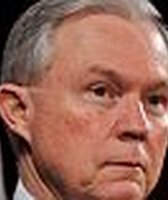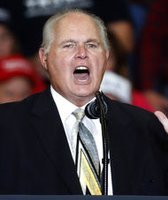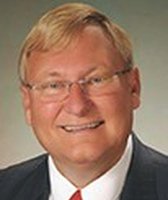Stand up for the facts!
Our only agenda is to publish the truth so you can be an informed participant in democracy.
We need your help.
I would like to contribute
Fast-track trade authority: Has every president since FDR had it?
President Barack Obama has an unusual ally in pursuit of his foreign trade agenda -- Rep. Paul Ryan, R-Wis.
Ryan believes that Congress should grant Obama trade promotion authority, something many pro-union Democrats oppose.
Trade promotion authority would allow trade agreements (such as the pending Trans-Pacific Partnership) to move through Congress under special rules intended to speed up the process, thus it is known colloquially as "fast-track." Congress would not be able to amend or filibuster a trade agreement, and the deal would only need 51 votes in the Senate to pass, as opposed to the 60 votes otherwise necessary.
"Every president since Franklin Delano Roosevelt has had this ability," Ryan said on CNN’s State of the Union May 17.
The claim that every president since Franklin D. Roosevelt has been granted some sort of fast-track authority is a common talking point among supporters, so we decided to look into it. We found that today’s fast-track has a connection to 1930s trade policy, but the particulars have evolved significantly over the past several decades.
First, we’ll go over the broad history of fast-track authority, then we’ll get into whether every single president had it.
Tariff-ic
"Fast-track and (trade promotion authority) trace their origins to the Trade Act of 1934," said Hal Shapiro, an international trade adviser who wrote a book on fast-track authority.
But the trade promotion authority bill currently before Congress has more in common with legislation passed in 1974 than the original 1930s legislation, which was narrower in scope and had more limitations on Congress.
First of all, the fast-track of the 1930s only pertained to tariffs -- taxes imposed on imported goods. For most of the country’s history, Congress set tariffs. But in 1934, they gave that authority to Roosevelt under the the Reciprocal Trade Agreements Act. Congress pre-approved a range of tariffs, and Roosevelt settled on the final rate in negotiations with foreign countries.
Today’s fast-track authority requires Congress to give final approval to trade agreements. But the Reciprocal Trade Agreements Act did not. Setting the pre-approved range of tariffs was Congress’ final involvement in the tariff negotiation process. Roosevelt’s signature was the final word.
Congress renewed presidential tariff reduction authority about a dozen times through the 1960s, into President Lyndon Johnson’s administration. So how did it morph into today’s law?
A big shift in international trade talks happened in the 1960s: Tariff reductions became less important in negotiations; instead countries focused on non-tariff barriers, which are aspects of domestic policy that are believed to hinder trade.
Johnson returned from a round of international negotiations having struck a deal that modified tariff policy but also two non-tariff policies that required changes to domestic law. Because the trade agreement went outside the scope of tariff policy changes, many members of Congress felt Johnson had overstepped his bounds, and Congress decided not to implement the parts of the agreement pertaining to non-tariff barriers.
Featured Fact-check
This debate eventually led to the creation of the Trade Act of 1974, which has been renewed periodically since then, and is currently in front of Congress as the Bipartisan Congressional Trade Priorities and Accountability Act of 2015.
The idea behind the 1974 legislation was that it would give Congress more oversight than it previously had on trade negotiations -- specifically non-tariff barriers policy -- by increasing review processes and requiring final congressional approval. But by implementing the fast-track procedures, such as prohibiting amendments and filibusters, Congress would not be able to dismantle a long-fought final deal.
Nearly ‘every president’
A 2015 Congressional Research Service report treats both the tariff legislation and today’s fast-track policies as one in the same in comparing trade authority given to each of the 12 presidents since Roosevelt until Obama. (See Appendix A.)
Going by that account, Ryan is close but wrong. Presidents Roosevelt, Harry Truman, Dwight Eisenhower, John F. Kennedy and Johnson, all had tariff reduction authority at some point in their administrations. And Congress gave Presidents Gerald Ford, Ronald Reagan, George H. W. Bush, Bill Clinton and George W. Bush, trade promotion authority.
But missing from this list is Richard Nixon, who was president during -- and involved with -- the debates that led to the 1974 trade promotion authority law.
"Technically, Nixon never had the authority, but the process was well advanced when he resigned," said Mac Destler, an expert in American trade politics at the University of Maryland. In other words, Nixon would have gotten the authority had he not resigned. (Gerald Ford did get fast-track authority.)
Ian Fergusson, the Congressional Research Service report author, affirmed Ryan’s claim -- saying, "Every president except Nixon" had fast-track trade authority.
Fergusson noted, though, that Clinton only had trade promotion authority in the first two years of his presidency, and Congress denied his 1997 request to renew. (Obama hasn’t had it yet.)
Of course, reasonable people can disagree over whether the 1930s legislation is equivalent to the fast-track authority that’s been around since 1974, affecting interpretation of the list.
"No, FDR did not create fast-track trade authority. And, JFK did not celebrate its renewal," wrote fast-track critic Lori Wallach, director of global trade for advocacy group Public Citizen, in a 2014 blog. Wallach, who wrote a book on fast-track, argued that allowing the president to negotiate non-tariff barriers, not just tariffs, sets modern legislation apart.
Our ruling
Ryan said, "Every president since Franklin Delano Roosevelt has had" fast-track trade authority.
From the 1930s until today, Every president except Nixon (and Obama) has had the ability to negotiate aspects of foreign trade policy with limited congressional involvement.
But these policies aren’t 100 percent apples to apples. For one, today’s policy involves more congressional oversight than the policy in place through the 1960s. Additionally, the original policy only pertained to tariff reductions, while today’s policy includes non-tariff barriers to trade. (Up until the late 1960s, foreign trade negotiations focused nearly exclusively on tariffs.)
On balance, we rate Ryan’s claim Half True.
Our Sources
Associated Press, "GOP Lawmakers Embrace Obama Trade Push More Than Democrats," Jan. 27, 2015
Congressional Research Service, "Trade Promotion Authority (TPA) and the Role of Congress in Trade Policy," April 27, 2015
Congressional Research Service, "Trade Promotion Authority (TPA): Frequently Asked Questions," May 7, 2015
Public Citizen, "Nixon Hatched Fast-Track, Not FDR," June 18, 2014
Brookings Institution, "Fast-Track Trade Promotion Authority," December 2001
PolitiFact, "Fact-checking the Elizabeth Warren and Barack Obama trade fight," May 14, 2015
Email interview, Ryan spokesman Robert Swift, May 17, 2015
Email interview, international trade lawyer Hal Shapiro, May 17, 2015
Email interview, Mac Destler, University of Maryland professor, May 17, 2015
Email interview, Ian Fergusson, Congressional Research Service international trade and finance specialist, May 17, 2015
Browse the Truth-O-Meter
More by Lauren Carroll
Fast-track trade authority: Has every president since FDR had it?
Support independent fact-checking.
Become a member!
In a world of wild talk and fake news, help us stand up for the facts.




























































